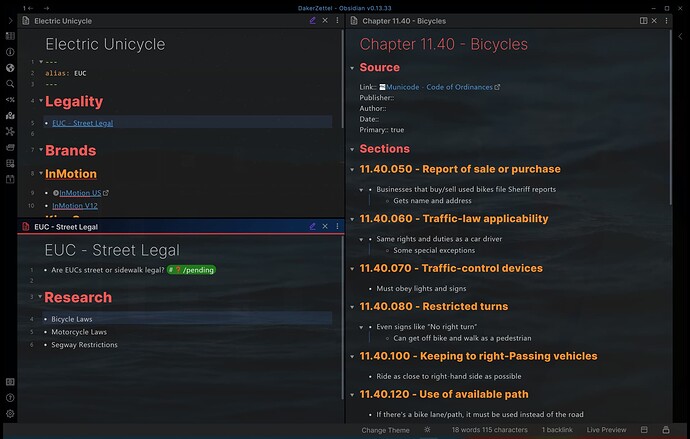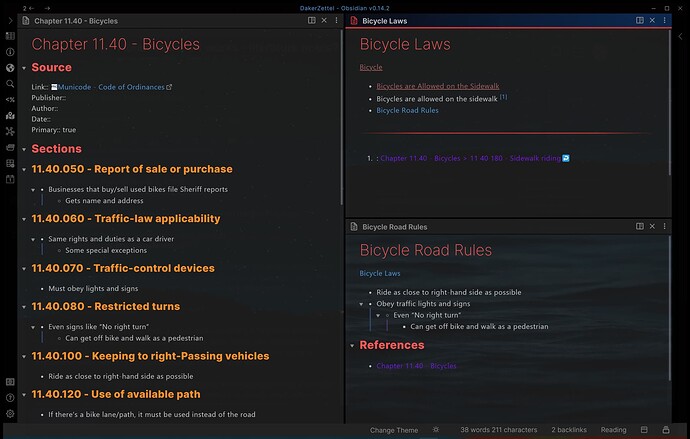Hey! First time poster, but over half a year of using Obsidian.
I recently started a new vault because my old vault was getting too complex. I was creating too much friction with an excessive number of tags and metadata, that creating a new note felt like a hassle. Organization was too top-down and notes were not atomic.
So I read “How to Take Smart Notes” and now want to make sure I’m doing it “correctly”. Below are some notes that I’m hoping to get some feedback on.
- Top left - MOC
- Bottom left - Note with question I’m researching
- Right - Literature note
I created a literature note for bicycle laws in my city and did the following:
- Cited the website
- Create a header for each regulation I found relevant
- Rewrite the regulation in my own words
The next step as I understand it is that I’m supposed to take the literature note and turn it into atomic notes. e.g. Make a “Bicycles are Allowed on Sidewalk” note. This way I can link to each individual idea in the future in some other note.
But is that actually useful and worth the effort?
If I were to break it out to be atomic, I would end up making a “Bicycle Laws” note. From there, I would have bullet points leading to other notes, like “Bicycle Road Rules” and “Bicycles are Allowed on Sidewalk”. These would combine multiple regulations that I found to be related enough to be on one note.
Below, in the “Bicycle Laws” note, I put 2 ways to do a “Bicycles are Allowed on the Sidewalk” note.
- Have it be its own note, which will have additional info and link back to the Literature Note
- Just write it in “Bicycle Laws” as a bullet point and footnote back to Literature Note
Which would you do?
This is what’s slowing me down right now; deciding if I’m supposed to do more with a Literature Note. I feel like I’m duplicating work, because I already wrote down the regulation as I’d like it and these aren’t notes I would further expand on.
Do you ever just make a Literature Note and link to it directly, instead of making additional atomic notes?

